Osmo by Tangible Play
An unconventional iPad game platform that takes kids beyond the screen, using mirror technology
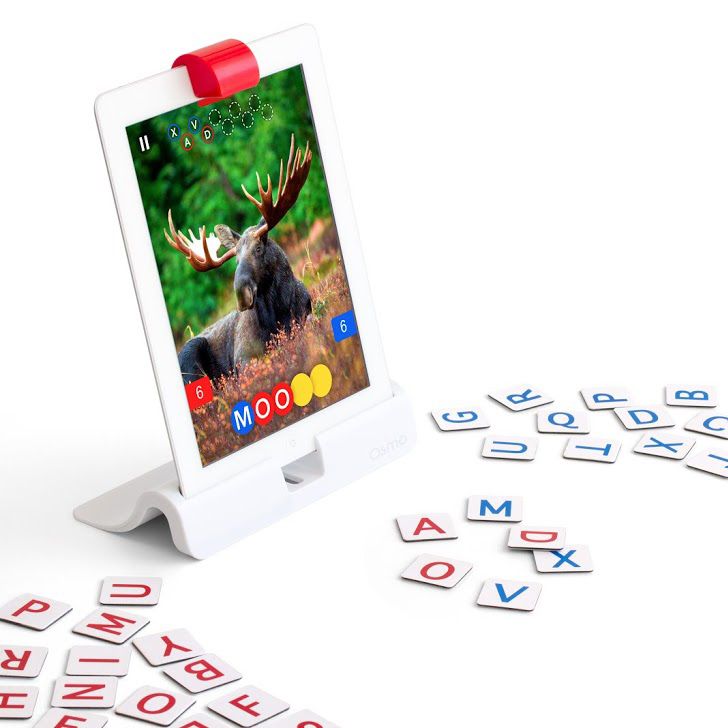
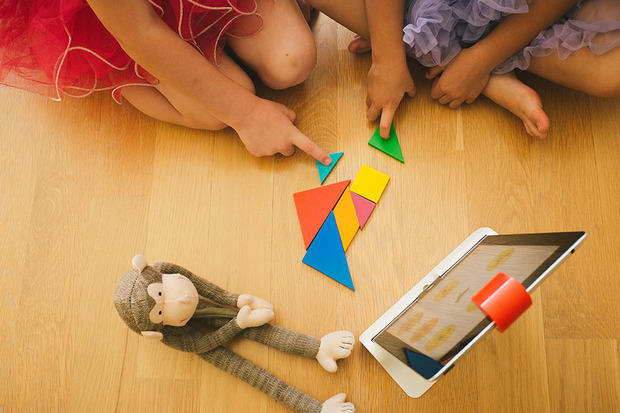
During the annual Toy Fair in NYC in February, between the Grumpy Cat plush dolls and temporary tattoos that sing and dance, we discovered a gem: an educational toy that makes use of the iPad in an unconventional way. Instead of being an app that just has kids completely focused on a small screen, Osmo incorporates “tangible” pieces in the real world to reap the best of both the digital and physical realms to learn creative problem-solving in a natural way. Hence, the new Palo Alto-based gaming company’s name is Tangible Play.
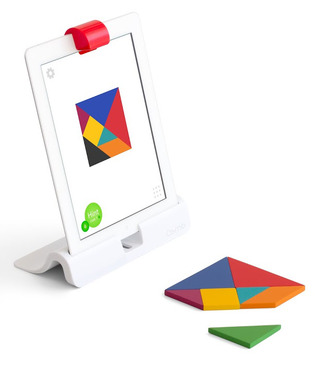
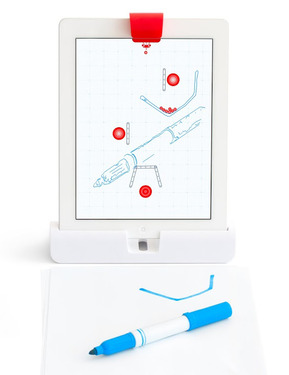
Osmo launches with three games, designed for children ages six to 12: in Newton, balls fly around the screen—and using pen and paper, players can draw structures that appear in the app, to help the balls hit targets. You can even use physical objects, like your hands, as something for the ball to bounce off. In Words (which can be a single or multi-player game) players try to guess the word using a photo clue; instead of swiping a letter onto the screen however, physical letter tiles are tossed in front of the screen. In Tangram, the app challenges you to arrange classical wooden tangram pieces, interacting with your different attempts and rewarding you when the puzzle is solved. Osmo doesn’t require a battery or Wi-Fi for gameplay, and each game incorporates physical pieces to bring kids outside of the screen and conscious of the real world around them.
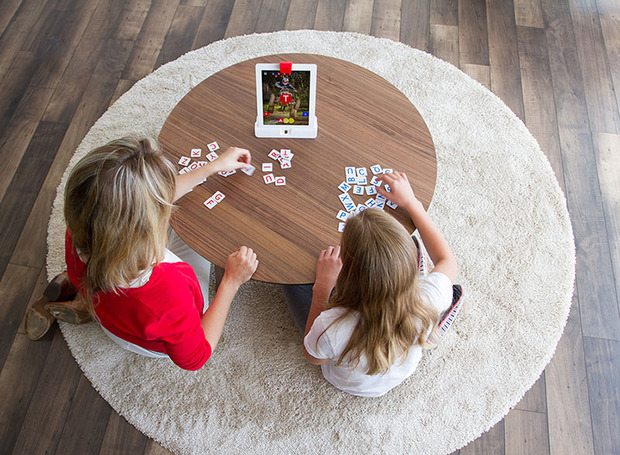
Osmo’s iPad accessory is fairly simple (a white platform and a red mirror device that goes over the iPad camera, thus able to scan what’s on the table); most of the complexity comes from the software. No one was better suited for such a challenge than two ex-Googlers: Pramod Sharma, who worked at the scanning project for Google Books where he focused on making computer vision robust and precise, and Jérôme Scholler, who worked on Chrome for Android—but in fact, had six years of experience working in the video game industry for Ubisoft in Montpellier, France and LucasArts in San Francisco.
Thanks to Sharma’s extensive experience with computer vision, Tangible Play had a very big start, though the two left Google just a year ago. “The robustness of the system is very, very important,” Scholler tells CH. “If I put a ‘B’ and the iPad detected an ‘R’—that’s a really bad experience.” When testing out the games, we were surprised to find how fast and smoothly the iPad registered the letter tiles and their different colors and pen marks upon a paper—there was no lag. This type of accuracy and agility is no trivial matter.

Just the fact that we use pieces in the real world gets you to think very differently. I would also argue that you would think more creatively.
Scholler explains that they wanted to create something to address how adults and kids get sucked into their portable devices. Most iPad apps are often isolating and take the user out of the physical world. “We didn’t come from the toy side, but mostly from the iPad side,” he says. “When you look at someone interacting with it, it’s very much one person, in the flow, focusing on the iPad.” He gives an example: when you try to get the attention of someone who’s playing on their iPad, they’re either unresponsive or react angrily for becoming distracted. “How can we go away from that and have a much more natural experience that actually involves the real world around you? And doesn’t capture you inside this bubble?” he continues. “Just the fact that we use pieces in the real world gets you to think very differently. I would also argue that you would think more creatively.”
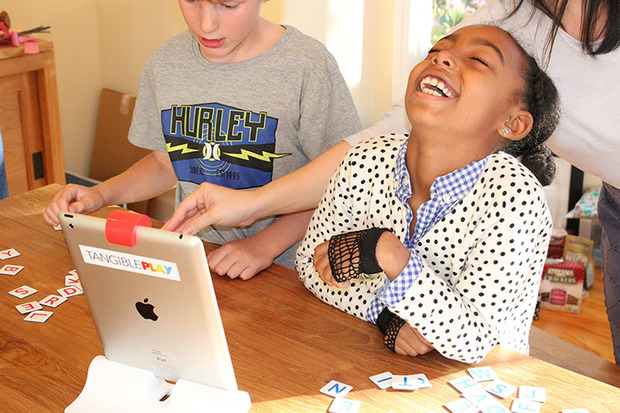
“For example,” Scholler points to the Newton game, “you draw on the piece of paper and the iPad is picking [up] everything you do. But here is nothing that prevents you from moving the piece of paper around, changing the paper, etc.” The team has tested Osmo across hundreds of schools for months, and the results have been positive; teachers observe kids gathering around the iPad, engaging with one another and working together.
Sharma and Scholler also happen to be young fathers—but as their kids are just toddlers, they’ve got a lot of motivation and time to create more unconventional games that are social and educational, while using cutting edge technology. Scholler explains the Tangible Play mission when designing future games: “If it’s a game that can be more or equally fun on the iPad, or if it’s a game that’s just fun without the iPad. We want to have a seamless experience where the iPad is very meaningful and drives you to actually do more. So we’re going to expand on that.”
Starting today, 22 May 2014, Osmo is accepting pre-sales in order to raise $50,000 to cover the final manufacturing costs. While the set will be priced at $99, early backers can snag one for $49 and up. They expect to start shipping this summer.
Images courtesy of Tangible Play









